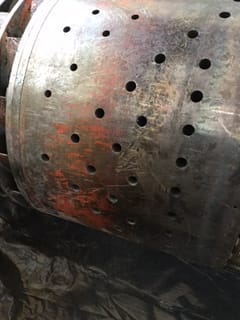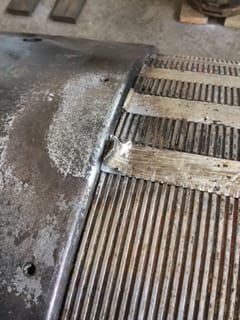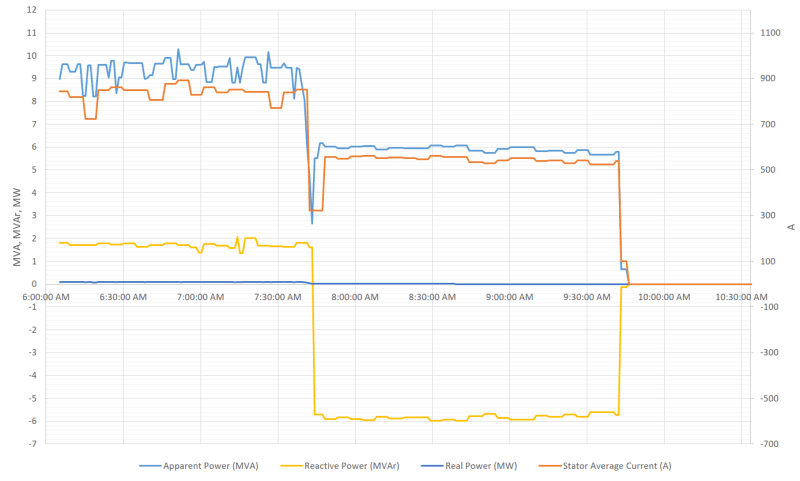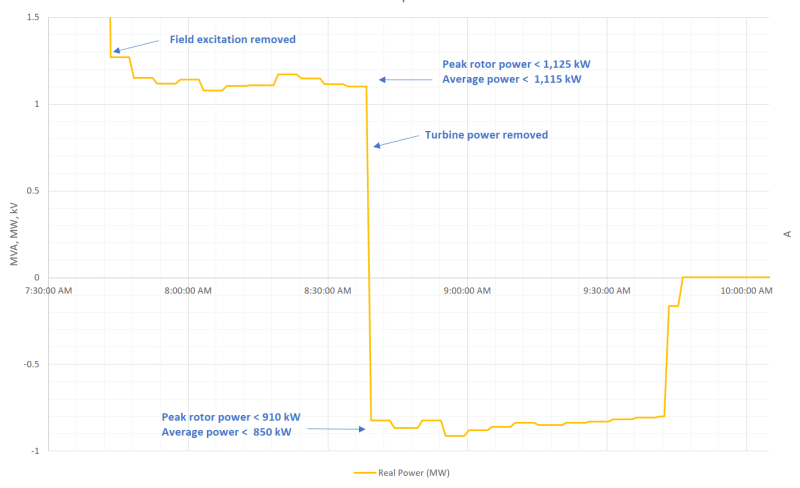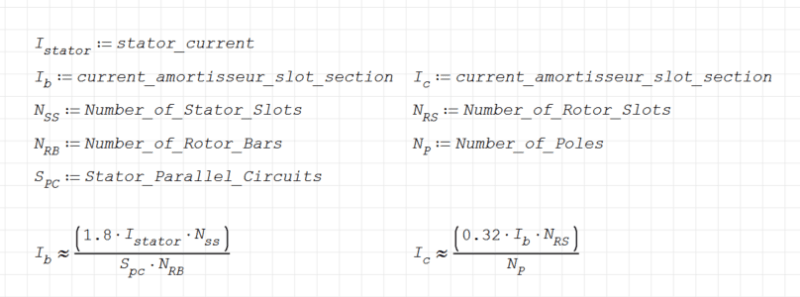Hello,
We were contacted to advise on our recommended inspection after a generator had been motored at synchronous speed for an extended period of time (40mins)
The entire event was approximately 80 minutes.
1. The field exitation was lost - and generator protection failed to trip - the generator was motoring but still driven by the turbine for approx 40mins.
2. The Turbine power was removed once motoring was noticed - and the generator motored at approx 2998 - 3003 RPM for 40mins still without excitation.
3. The stator was finally isolated and the unit spun down.
Given this sequence of events we advised a caps-off inspection in which we anticipated to see some arcing damage between the wedges and the end caps.
We have since recieved and partially completed the caps off inspection. Identifying almost no damage to either the retaining rings or the slot wedges.
Is this typical of a loss of excitation event when it occurs at synchronous speed (50hz)?
What detail could we have missed that would have protected the rotor from damage and avoided the arguably uneccessary forced shutdown?
Are these events only destructive when the rotor speed is significantly different to the synchronous speed of the stator?
Kind regards,
JT
We were contacted to advise on our recommended inspection after a generator had been motored at synchronous speed for an extended period of time (40mins)
The entire event was approximately 80 minutes.
1. The field exitation was lost - and generator protection failed to trip - the generator was motoring but still driven by the turbine for approx 40mins.
2. The Turbine power was removed once motoring was noticed - and the generator motored at approx 2998 - 3003 RPM for 40mins still without excitation.
3. The stator was finally isolated and the unit spun down.
Given this sequence of events we advised a caps-off inspection in which we anticipated to see some arcing damage between the wedges and the end caps.
We have since recieved and partially completed the caps off inspection. Identifying almost no damage to either the retaining rings or the slot wedges.
Is this typical of a loss of excitation event when it occurs at synchronous speed (50hz)?
What detail could we have missed that would have protected the rotor from damage and avoided the arguably uneccessary forced shutdown?
Are these events only destructive when the rotor speed is significantly different to the synchronous speed of the stator?
Kind regards,
JT

